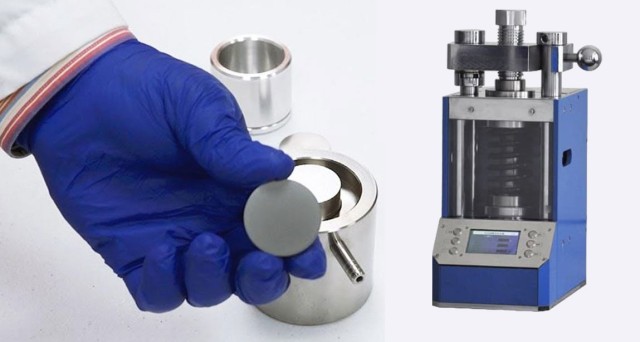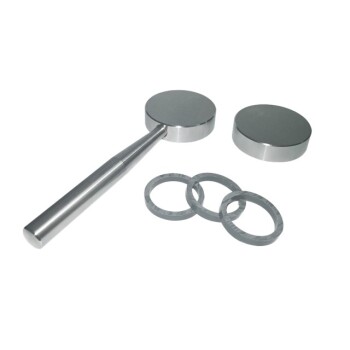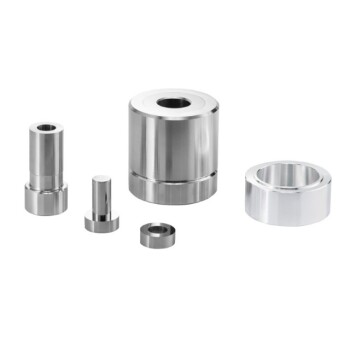Table des matières
- Introduction à l'analyse XRF et à la préparation des échantillons
- P - Préparation : Assurer l'homogénéité des échantillons
- R - Conception de la recette : Facteurs clés pour une presse à granulés réussie
- E - L'équipement : Choisir les bons outils pour le travail
- S - Sécurité : Se protéger pendant la préparation des échantillons
- S - Stratégie : Développer un flux de travail de préparation cohérent
- T - Formation et conformité : Améliorer vos compétences en XRF
- Conclusion : Atteindre l'excellence dans l'analyse XRF
Introduction à l'analyse XRF et à la préparation des échantillons
L'analyse par fluorescence X (XRF) est une technique essentielle pour la caractérisation des matériaux, offrant des résultats non destructifs et très précis. Cependant, la qualité de ces résultats dépend fortement de la préparation méticuleuse des échantillons. Cet article se penche sur les subtilités de la préparation des échantillons XRF, en soulignant l'importance d'assurer l'homogénéité, de concevoir des recettes efficaces, de sélectionner l'équipement approprié, de maintenir des protocoles de sécurité, de développer des flux de travail cohérents et d'améliorer les compétences par le biais de la formation et de la conformité. En maîtrisant ces 7 stratégies PRESS éprouvées, vous pouvez obtenir des résultats optimaux et élever vos analyses XRF à de nouveaux sommets de précision et de fiabilité.
P - Préparation : Assurer l'homogénéité des échantillons
La préparation des échantillons pour l'analyse par fluorescence X (XRF) est une étape critique qui a un impact direct sur la précision et la fiabilité des résultats. L'objectif est de créer un échantillon homogène qui puisse être analysé de manière cohérente, quel que soit le type ou la forme du matériau. Cette section décrit en détail les étapes de la préparation des échantillons pour l'analyse XRF, en mettant l'accent sur les techniques d'homogénéisation et l'utilisation de matrices XRF de haute qualité.
Techniques d'homogénéisation
L'homogénéisation est le processus qui permet d'uniformiser la composition d'un échantillon, ce qui est essentiel pour une analyse XRF précise. Les techniques suivantes sont couramment utilisées pour obtenir un échantillon homogène :
-
Broyage: La première étape de l'homogénéisation consiste à réduire l'échantillon en poudre fine. Idéalement, la taille des grains doit être inférieure à 75 micromètres (<75μm). Cela garantit que l'échantillon est uniformément réparti et réduit la probabilité d'espaces vides, qui peuvent conduire à des lectures inexactes. Pour la plupart des matériaux, le broyage à ce niveau de finesse est suffisant pour obtenir un échantillon homogène.
-
Mélange: Après le broyage, l'échantillon doit être soigneusement mélangé. Cette opération peut être effectuée à l'aide d'un mélangeur mécanique ou en remuant manuellement la poudre. L'objectif est de s'assurer que toutes les parties de l'échantillon sont représentées de manière égale, ce qui est crucial pour une analyse XRF cohérente.
-
Liaison: Dans certains cas, un agent liant peut être ajouté à l'échantillon en poudre. Ceci est particulièrement utile pour les échantillons qui sont difficiles à presser en pastilles. Les liants les plus courants sont les mélanges de cire de cellulose, qui sont généralement ajoutés dans une proportion de 20 à 30 % de liant par rapport à l'échantillon. Le liant aide à maintenir l'échantillon ensemble et garantit une pastille uniforme.
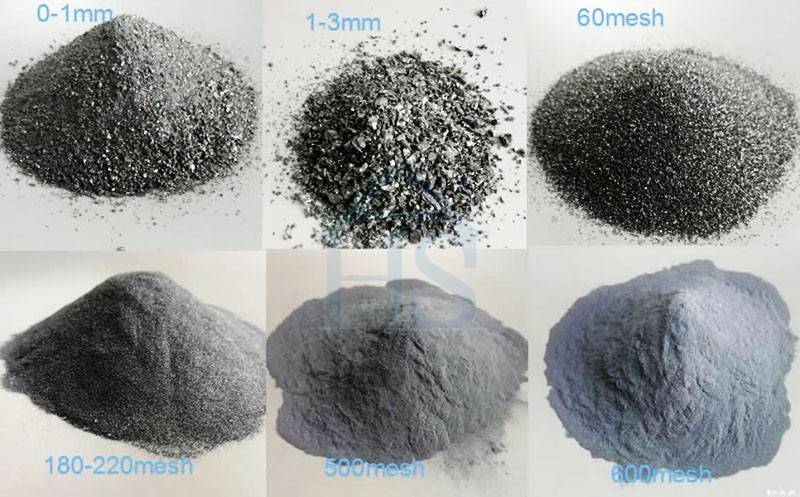
Utilisation de matrices à pastilles XRF de haute qualité
Une fois l'échantillon homogénéisé, l'étape suivante consiste à le presser en pastilles à l'aide de matrices XRF de haute qualité. Les pastilles pressées constituent une méthode de préparation des échantillons plus rigoureuse que les poudres en vrac, car elles offrent une surface plus uniforme et plus stable pour l'analyse. Voici les étapes à suivre :
-
Chargement de la filière: Assurez-vous que l'échantillon est exempt de tout amas et qu'il est complètement homogène avant de le charger dans la filière. Cette étape est cruciale pour créer une pastille homogène.
-
Pressage: Utilisez une presse hydraulique pour appliquer une pression sur l'échantillon. La pression recommandée se situe entre 20 et 30 tonnes (20-30T). Cette pression est suffisante pour créer un granulé dense et homogène sans provoquer de surchauffe ou de déformation de l'échantillon.
-
Lubrification: Appliquez un lubrifiant de pressage de granulés sur la filière pour empêcher l'échantillon de coller. Cela permet de retirer facilement la pastille de la filière sans l'endommager.
-
Répétition: Répétez le processus pour chaque échantillon qui doit être pressé dans une pastille XRF. La régularité du processus de pressage est essentielle pour obtenir des résultats fiables.
Conseils pour un pressage réussi des pastilles XRF
-
Matrices de qualité: Utilisez toujours des matrices de haute qualité pour les pastilles XRF afin de garantir des formes et des tailles de pastilles homogènes. Des matrices de mauvaise qualité peuvent conduire à des pastilles irrégulières, ce qui peut affecter la précision de votre analyse.
-
Équipement de protection individuelle (EPI): Portez toujours un EPI approprié, tel que des gants et des lunettes de sécurité, lorsque vous travaillez avec des échantillons en poudre. Cela vous protège des risques potentiels associés à la manipulation de poudres fines.
-
Instructions du fabricant: Suivez les instructions du fabricant de la presse hydraulique pour vous assurer que vous l'utilisez correctement. Il s'agit notamment de régler la pression appropriée et de s'assurer que la presse fonctionne correctement.
-
Normes d'étalonnage: La méthode de préparation des échantillons que vous avez choisie doit être appliquée à vos normes d'étalonnage ainsi qu'à tous les échantillons inconnus. Cela permet de garantir la précision et la cohérence de l'étalonnage.
R - Conception de la recette : Facteurs clés pour une presse à granulés réussie
La conception d'une recette de préparation d'échantillon pour le pressage de pastilles est une étape critique pour garantir des résultats d'analyse précis et reproductibles. Le processus implique plusieurs facteurs clés qui doivent être méticuleusement contrôlés. Ces facteurs comprennent la taille des particules, le choix du liant, le taux de dilution de l'échantillon, la pression de pressage et l'épaisseur des granulés. Chacun de ces éléments joue un rôle crucial dans la qualité et la cohérence de la pastille finale, ce qui a un impact direct sur la fiabilité des données analytiques.
Taille des particules
La taille des particules de l'échantillon est l'un des facteurs les plus critiques dans la préparation des granulés. Des particules de petite taille permettent généralement une meilleure liaison et des pastilles plus uniformes. Idéalement, les échantillons devraient être broyés à une taille de particule inférieure à 50µm. Toutefois, des particules d'une taille allant jusqu'à 75 µm peuvent encore donner des résultats acceptables. L'utilisation de particules plus petites se justifie par le fait qu'elles offrent une plus grande surface d'adhérence au liant, ce qui permet d'obtenir des granulés plus solides et plus cohésifs. Les particules plus grosses, en revanche, peuvent conduire à des pastilles faibles qui risquent de se briser pendant la manipulation ou l'analyse, ce qui endommagerait le spectromètre et compromettrait l'échantillon.
Choix du liant
Le choix du liant est un autre élément essentiel du processus de préparation des pastilles. Le liant sert à maintenir les particules de l'échantillon ensemble sous pression, garantissant que le culot reste intact pendant l'analyse. Les liants les plus couramment utilisés dans le pressage des granulés sont des matériaux organiques tels que les cires, la cellulose ou l'alcool polyvinylique (PVA). Le choix du liant dépend du type d'échantillon et de la technique d'analyse utilisée. Par exemple, les liants à base de cire sont souvent préférés pour l'analyse par fluorescence X (XRF) en raison de leur capacité à résister à des pressions élevées et à assurer une bonne intégrité des pastilles.
Taux de dilution de l'échantillon
Le taux de dilution de l'échantillon, qui correspond à la proportion de liant par rapport à l'échantillon, est également un paramètre essentiel. Une pratique courante consiste à utiliser un rapport liant/échantillon de 20 à 30 %. Ce rapport garantit que l'échantillon est suffisamment lié sans être trop dilué. Une surdilution peut conduire à des granulés faibles qui ont tendance à se casser, tandis qu'une sous-dilution peut conduire à des granulés trop denses et difficiles à manipuler. La constance du rapport liant/échantillon est essentielle pour la reproductibilité, car toute variation peut introduire des erreurs dans les résultats analytiques.
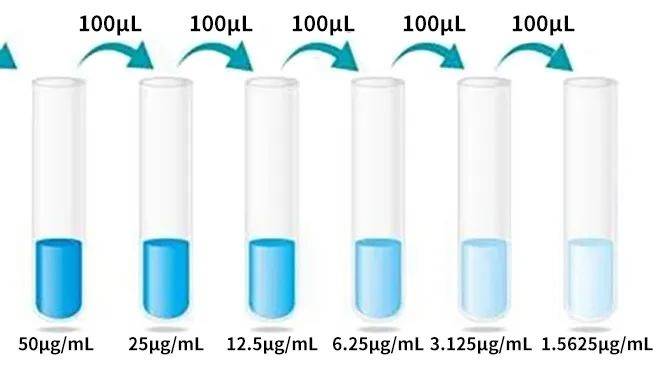
Pression de pressage
La pression de pressage est la force appliquée au mélange échantillon-liant pour former la pastille. La pression requise peut varier en fonction du type d'échantillon et de liant utilisé. En général, des pressions plus élevées permettent d'obtenir des pastilles plus denses et plus durables. Toutefois, une pression excessive peut provoquer des fissures ou des déformations du granulé, ce qui entraîne des résultats incohérents. Il est important d'établir une plage de pression optimale pour chaque type d'échantillon au cours du développement de la méthode. Cette plage doit être maintenue en permanence pour garantir la qualité et la reproductibilité des pastilles.
Épaisseur du culot
L'épaisseur de la pastille finale est un autre facteur qui doit être soigneusement contrôlé. L'épaisseur de la pastille affecte l'uniformité de l'échantillon et la précision des résultats analytiques. Des pastilles plus épaisses peuvent entraîner une compression non uniforme, ce qui se traduit par des variations du signal analytique. Inversement, des pastilles trop fines peuvent être trop fragiles et susceptibles de se briser. L'épaisseur idéale d'une pastille se situe généralement entre 1 et 3 mm, en fonction des exigences spécifiques de la technique analytique utilisée. Le maintien d'une épaisseur de pastille constante est essentiel pour garantir des résultats reproductibles.
Considérations pratiques
Dans la pratique, la préparation des pastilles pressées comporte plusieurs étapes, notamment le broyage de l'échantillon à la taille de particule appropriée, le mélange de l'échantillon avec le liant, le transfert du mélange dans la matrice de la presse à pastilles et l'application de la pression nécessaire à la formation de la pastille. Chaque étape doit être exécutée avec précision et cohérence pour garantir la qualité du granulé final. L'attention portée aux détails, tels que l'étalement régulier du mélange d'échantillons dans la matrice et l'application de la pression correcte, est essentielle pour minimiser les erreurs et obtenir des résultats analytiques fiables.
E - Équipement : Choisir les bons outils pour le travail
Lorsqu'il s'agit de presser des pastilles XRF, il est essentiel de choisir le bon équipement pour obtenir des résultats précis et cohérents. Le processus consiste à créer des pastilles solides et uniformes à partir d'échantillons en poudre, qui sont ensuite analysées par spectroscopie de fluorescence X (XRF). Cette section vous guidera à travers les considérations clés pour choisir le meilleur équipement, avec un accent particulier sur les avantages de l'utilisation des presses hydrauliques automatiques KINTEK et d'autres outils essentiels.
Presses hydrauliques manuelles ou automatiques
Le choix entre une presse hydraulique manuelle et une presse hydraulique automatique dépend largement du volume et de la fréquence de vos analyses XRF. Les presses hydrauliques manuelles, bien que rentables, exigent un effort physique important de la part de l'opérateur, en particulier lorsqu'il s'agit d'appliquer des pressions élevées. Ces presses offrent généralement une force de pression maximale allant jusqu'à 250 kN, avec des affichages de force de pression clairement conçus et une utilisation simple par le biais d'un levier manuel. Toutefois, l'effort requis pour obtenir des pressions élevées peut être pénible et entraîner des incohérences dans l'application de la pression.
En revanche, les presses hydrauliques automatiques offrent plusieurs avantages, en particulier dans les laboratoires très fréquentés. Ces presses peuvent être programmées pour fonctionner de manière autonome une fois installées, ce qui permet aux techniciens de se concentrer sur d'autres tâches. Les presses automatiques sont disponibles dans différentes configurations, telles que 30, 40 et 60 tonnes, et leur utilisation est nettement moins laborieuse. Elles sont donc idéales pour les travaux de pressage fréquents, car elles offrent une plus grande précision et une meilleure cohérence grâce à l'élimination des facteurs variables pendant l'utilisation.
Avantages des presses hydrauliques automatiques KINTEK
KINTEK est un fabricant renommé d'équipements de laboratoire de haute qualité, notamment de presses hydrauliques automatiques spécialement conçues pour la préparation des pastilles XRF. Ces presses sont conçues pour répondre aux exigences des laboratoires à haut débit, offrant plusieurs avantages clés :
-
Haut débit: Les presses hydrauliques automatiques KINTEK sont conçues pour un fonctionnement rapide et efficace, permettant la préparation rapide d'échantillons multiples. Ceci est particulièrement bénéfique pour les laboratoires qui traitent un grand volume d'analyses XRF.
-
Matrices à pastilles intégrées: Ces presses sont équipées de matrices intégrées, qui rationalisent le processus et réduisent le temps nécessaire à la préparation de chaque échantillon. Les matrices sont conçues pour assurer une formation uniforme des pastilles, ce qui est essentiel pour une analyse XRF précise.
-
Automatisation: Les fonctions d'automatisation des presses KINTEK permettent d'obtenir des résultats cohérents et reproductibles. Une fois programmée, la presse peut fonctionner de manière autonome, réduisant le risque d'erreur humaine et garantissant que chaque échantillon est préparé selon les mêmes normes rigoureuses.
-
Facilité d'utilisation: Les presses KINTEK sont conçues avec des interfaces conviviales, ce qui les rend faciles à utiliser même pour les personnes ayant une expertise technique limitée. Les presses sont également dotées de systèmes de décompression automatiques pour éviter les surcharges et garantir la sécurité.
-
Polyvalence: Les presses hydrauliques automatiques KINTEK sont compatibles avec une gamme de types d'échantillons, y compris ceux qui peuvent nécessiter des liants supplémentaires comme la cire. Cette polyvalence garantit que la presse peut traiter une grande variété de matériaux, ce qui en fait un outil polyvalent dans tout laboratoire XRF.

Outils essentiels pour la préparation des pastilles XRF
En plus de lala presse hydrauliqueplusieurs autres outils sont essentiels pour une préparation réussie des pastilles XRF :
-
Matrice de pastilles XRF: Ces matrices sont spécialement conçues pour créer des pastilles uniformes à partir d'échantillons en poudre. Elles existent en différents diamètres, tels que 40 mm, 32 mm et 15 mm, ce qui permet de varier la taille des échantillons.
-
Lubrifiant de pressage des pastilles: L'application d'une fine couche de lubrifiant sur la matrice et l'échantillon permet d'éviter le collage et de garantir une formation régulière des granulés. Les lubrifiants sont disponibles en différentes formulations pour s'adapter aux différents types d'échantillons.
-
Échantillon en poudre: La qualité de l'échantillon en poudre est essentielle pour une analyse XRF précise. Les échantillons doivent être broyés en une poudre fine et homogène, sans amas ni impuretés.
-
Liants en cire: Dans certains cas, en particulier pour les matériaux qui ne se lient pas bien ou ne se désagrègent pas facilement, l'ajout d'un liant cireux à l'étape du broyage peut améliorer la formation des pastilles. Les liants cireux sont disponibles sous forme de poudre ou de comprimés et doivent être utilisés dans la quantité minimale nécessaire pour lier l'échantillon en toute sécurité.
S - Sécurité : Se protéger lors de la préparation des échantillons
Lors de la manipulation d'échantillons en poudre et de l'utilisation d'équipements XRF (fluorescence X), la sécurité doit être la première préoccupation. On ne saurait trop insister sur l'importance de l'équipement de protection individuelle (EPI) et du respect des protocoles de sécurité. Cette section aborde les aspects critiques de la sécurité qui garantissent le bien-être des opérateurs et la précision des mesures.
Équipement de protection individuelle (EPI)
L'équipement de protection individuelle est essentiel pour protéger les opérateurs des risques potentiels associés aux échantillons en poudre et à l'équipement XRF. Les principaux éléments de l'EPI sont les suivants
- Gants: Portez toujours des gants lorsque vous manipulez des échantillons en poudre afin d'éviter tout contact cutané avec des matériaux potentiellement dangereux. Les gants jetables en nitrile sont généralement recommandés en raison de leur résistance aux produits chimiques et aux poudres.
- Lunettes de sécurité: Protégez vos yeux des particules en suspension dans l'air et des éclaboussures potentielles. Les lunettes de sécurité munies d'écrans latéraux offrent une protection complète.
- Blouses ou tabliers de laboratoire: Portez une blouse ou un tablier pour protéger vos vêtements de la contamination. Veillez à ce que la blouse soit fabriquée dans un matériau facilement nettoyable ou jetable.
- Protection respiratoire: Selon la nature de la poudre, un appareil respiratoire peut être nécessaire pour éviter l'inhalation de particules nocives. Utilisez un respirateur approuvé par des organismes de réglementation tels que le NIOSH.

Protocoles de sécurité pour la manipulation des échantillons en poudre
Il est essentiel de manipuler correctement les échantillons en poudre afin d'éviter toute contamination et de garantir des mesures précises. Voici quelques protocoles clés à suivre :
- Propreté de la surface: En cas de doute sur la propreté de la surface d'un échantillon, comparez les résultats des mesures avant et après le broyage. Si les résultats diffèrent de manière significative, broyer à nouveau l'échantillon jusqu'à ce que la différence entre les résultats avant et après broyage soit comprise dans l'erreur de mesure.
- Préparation de l'échantillon: Il existe plusieurs méthodes de préparation des échantillons de poudre, telles que le compactage de la poudre, la fusion du flux ou la mesure directe de la poudre finement broyée. La méthode la plus simple et la plus courante est la mesure directe de la poudre finement broyée. Dans ce cas, préparez des cuvettes et des films pour les mesures. Consultez le fournisseur pour sélectionner le type de film le mieux adapté à une tâche et à un appareil spécifiques.
- Homogénéité de l'échantillon: Les échantillons en vrac, tels que les catalyseurs automobiles ou la terre, doivent être soigneusement broyés avant la mesure. Les particules les plus grosses peuvent avoir une composition très différente, c'est pourquoi le broyage permet d'obtenir un échantillon plus homogène. Si le broyage n'est pas possible, faites la moyenne des résultats de plusieurs mesures en mélangeant l'échantillon dans la cuvette.
Protocoles de sécurité pour l'utilisation de l'équipement XRF
L'équipement XRF utilise des rayons X, qui peuvent être nocifs pour la santé s'ils ne sont pas manipulés correctement. Voici quelques protocoles de sécurité à suivre lors de l'utilisation d'analyseurs XRF :
-
Sécurité des rayonnements: Les analyseurs XRF émettent des rayons X qui peuvent être nocifs s'ils ne sont pas manipulés correctement. Respectez toujours les règles de sécurité en matière de radiations :
- Restez à l'écart des autres: Maintenez une distance d'au moins 4,57 mètres (15 pieds) avec les autres personnes lorsque vous utilisez l'analyseur XRF.
- Utiliser des accessoires: Utilisez les accessoires optionnels tels que les bancs d'essai pour minimiser l'exposition directe au faisceau de rayons X.
- Formation: Dispensez une formation à la radioprotection aux opérateurs afin de vous assurer qu'ils comprennent les risques et la manière de les atténuer.
- Éviter l'exposition directe: Ne tenez jamais un échantillon pendant l'analyse. Surveillez l'indicateur de faisceau principal et assurez-vous que le faisceau n'est pas dirigé vers quelqu'un.
- Manipulation prudente: Manipulez et utilisez l'appareil XRF avec précaution. Stockez-le en toute sécurité conformément aux exigences locales en matière de stockage.
-
Cartouches de protection: La cartouche de protection est essentielle pour protéger le détecteur de la poussière et des contaminants. Remplacez la cartouche régulièrement, car la saleté et les particules des échantillons précédemment mesurés peuvent s'accumuler et fausser les résultats des mesures. La fréquence de remplacement peut varier en fonction du type d'échantillon mesuré. Par exemple, les alliages d'aluminium peuvent laisser des particules qui affectent la précision des mesures ultérieures, ce qui nécessite des changements de cartouche plus fréquents.
-
Durée de la mesure: Veillez à ce que la durée de mesure soit suffisante pour obtenir des résultats précis. Le temps de mesure influe sur la précision de la mesure ; des temps plus longs entraînent des erreurs moins importantes dans la détermination de la concentration des éléments dans l'échantillon. En règle générale, 10 à 30 secondes sont nécessaires pour obtenir un résultat quantitatif précis.
S - Stratégie : Développer un flux de travail de préparation cohérent
La création d'un flux de travail standardisé pour la préparation des échantillons XRF est cruciale pour assurer la cohérence et la reproductibilité de vos résultats. Une bonne préparation des échantillons est la base d'une analyse par fluorescence X (XRF) précise, car elle a un impact significatif sur la qualité des données analytiques. Contrairement à d'autres techniques d'analyse, la fluorescence X ne nécessite pas de préparation approfondie de l'échantillon, ce qui en fait une méthode rentable et efficace. Toutefois, cela ne diminue en rien l'importance d'établir un protocole de préparation solide.
Échantillons solides
Les échantillons solides, qu'il s'agisse de pièces métalliques non préparées ou d'échantillons métalliques coupés et polis, doivent être manipulés avec soin pour garantir des résultats précis. L'échantillon idéal pour l'analyse XRF doit présenter une surface parfaitement plane. Les surfaces irrégulières peuvent modifier la distance entre l'échantillon et la source de rayons X, ce qui introduit des erreurs de mesure. Tous les systèmes XRF sont étalonnés sur la base d'une distance fixe entre l'échantillon et la source, de sorte que tout écart peut affecter l'intensité des signaux des rayons X.
Pour les alliages métalliques et autres échantillons solides, une préparation minimale peut suffire pour une analyse qualitative. Toutefois, pour obtenir des résultats plus quantitatifs, il est recommandé de couper et de polir les échantillons. L'état de surface est particulièrement important pour les éléments plus légers, car les surfaces rugueuses peuvent entraîner la diffusion et la réabsorption des éléments à plus grande longueur d'onde. Cet effet dépend de l'énergie, ce qui signifie que si les éléments plus lourds comme le nickel (Ni) ne sont pas affectés de manière significative, les éléments plus légers comme le carbone (C) ou le soufre (S) peuvent présenter des réductions spectaculaires de l'intensité du signal. Par conséquent, une finition de surface plus fine obtenue par lissage ou broyage est essentielle pour une analyse précise.
Échantillons de poudre
La préparation des échantillons de poudre pour l'analyse XRF fait appel à plusieurs méthodes, notamment le compactage de la poudre, la fusion du flux et la mesure directe de la poudre finement broyée. La méthode la plus simple et la plus courante est la mesure directe de la poudre finement broyée. Ce processus implique de sélectionner les cuvettes et les films appropriés pour les mesures. Il existe différents types de films disponibles pour la fluorescence X, et le choix du bon film dépend de la tâche spécifique et de l'appareil utilisé. Il est essentiel de consulter le fournisseur pour s'assurer de la sélection du film le plus approprié.
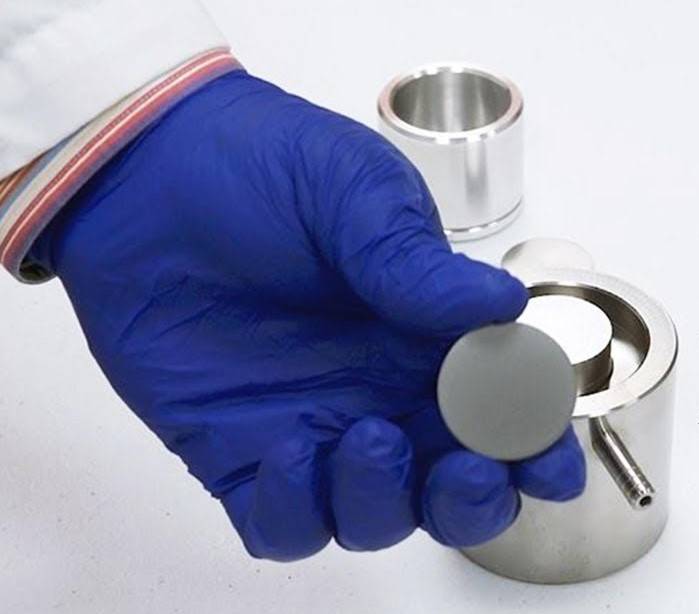
Cohérence du flux de travail
Pour maintenir la cohérence de votre analyse XRF, il est essentiel d'établir un flux de travail standardisé. Cela inclut
-
Propreté de la surface: Avant l'analyse, assurez-vous que la surface de l'échantillon est propre. En cas de doute sur la propreté de la surface, comparez les résultats des mesures avant et après le broyage de l'échantillon. Si les résultats diffèrent de manière significative, poncez à nouveau l'échantillon jusqu'à ce que la différence entre les résultats avant et après le ponçage se situe dans les limites de l'erreur de mesure.
-
Mise au point et étalonnage: Évaluez régulièrement si un réglage fin ou un étalonnage est nécessaire pour votre équipement XRF. Cela permet de s'assurer que l'appareil fonctionne de manière optimale et fournit des résultats précis.
-
Optimisation de la durée des essais: Ajustez la durée de l'essai pour les éléments d'intérêt afin de vous assurer que vous obtenez suffisamment de données sans prolonger inutilement l'analyse.
-
Sélectionner le bon mode: Choisissez le mode approprié dans l'analyseur XRF en fonction du type d'échantillon et des éléments analysés. Cela peut avoir un impact significatif sur la précision de vos résultats.
-
Comprendre les caractéristiques de l'échantillon: Soyez conscient de l'impact de l'hétérogénéité, de l'humidité, de la taille des particules et des différents contenants d'échantillons sur vos résultats. Ces facteurs peuvent introduire de la variabilité et doivent être contrôlés pour garantir la reproductibilité.
-
Élaborer des procédures opératoires normalisées (POS): Établissez une méthode "adaptée à l'objectif" et élaborez des modes opératoires normalisés pour la préparation des échantillons. Cela permet de s'assurer que tous les opérateurs suivent le même protocole, ce qui permet d'obtenir des résultats cohérents.
-
Contrôle et assurance de la qualité (CQ/AQ): Mettre en œuvre des mesures de CQ/AQ appropriées, y compris l'utilisation de matériaux de référence certifiés (MRC) appariés à la matrice, de blancs, de duplicatas et de réplicats. Ces mesures permettent de vérifier l'exactitude et la fiabilité des résultats.
T - Formation et conformité : Améliorer vos compétences en matière d'XRF
On ne saurait trop insister sur le rôle de la formation et de la conformité dans la maîtrise de l'analyse XRF. Une formation adéquate permet aux opérateurs de comprendre les subtilités de la technologie de fluorescence X (XRF), tandis que le respect des réglementations locales garantit une utilisation sûre et précise de l'équipement. Cette section traite de l'importance de la formation, de la nécessité de respecter les réglementations locales et des avantages de la formation d'un personnel qualifié.
Importance de la formation
La formation est la pierre angulaire d'une analyse XRF efficace. Les opérateurs doivent bien connaître les aspects théoriques de la technologie XRF, notamment ses principes, son fonctionnement et ses pièges potentiels. Sans une formation adéquate, même les analyseurs XRF les plus avancés peuvent donner des résultats inexacts en raison d'un mauvais étalonnage, d'une mauvaise préparation de l'échantillon ou de mauvaises techniques de mesure.
Par exemple, l'une des erreurs les plus courantes commises par les débutants est la mauvaise préparation de l'échantillon. Les échantillons solides tels que les métaux et les alliages doivent être nettoyés minutieusement, ce qui nécessite souvent des fichiers différents pour chaque matériau afin d'éviter toute contamination croisée. Les échantillons en vrac, tels que la terre ou les catalyseurs automobiles, doivent être broyés ou mélangés pour garantir leur homogénéité. Une formation adéquate garantit que les opérateurs comprennent ces nuances, ce qui permet d'obtenir des résultats plus fiables et plus précis.
Un autre aspect critique est l'étalonnage. Les analyseurs XRF utilisent la méthode des paramètres fondamentaux, qui nécessite un étalonnage préalable pour des tâches spécifiques. Une mauvaise utilisation d'un analyseur calibré pour les alliages afin d'analyser des métaux précieux ou de la terre peut entraîner une mauvaise précision. La formation permet aux opérateurs d'acquérir les connaissances nécessaires pour sélectionner le bon étalonnage pour chaque tâche, garantissant ainsi des résultats quantitatifs plutôt que qualitatifs.
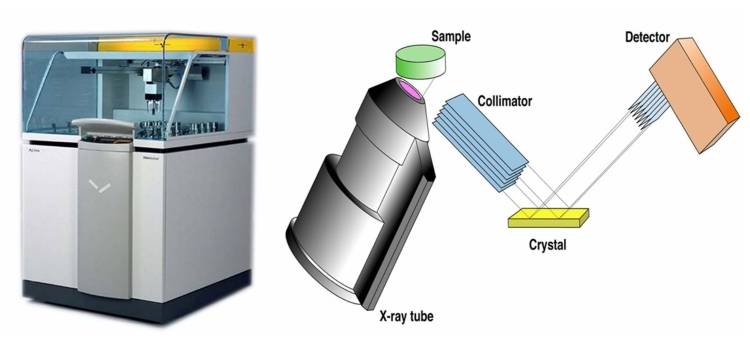
Respect des réglementations locales
Le respect des réglementations locales est tout aussi important. Les analyseurs XRF utilisent des rayons X qui, bien que de faible intensité, peuvent présenter des risques pour la santé en cas d'exposition prolongée. Les réglementations varient selon les pays et les États et couvrent des aspects tels que les limites d'exposition autorisées, les protocoles de sécurité et les normes relatives à l'équipement. Le respect de ces réglementations garantit non seulement la sécurité des opérateurs, mais aussi la fiabilité des données générées.
Par exemple, certaines réglementations peuvent exiger que les opérateurs portent un équipement de protection ou limitent la durée de l'exposition continue. D'autres peuvent imposer des contrôles et une maintenance régulière des équipements. Il est essentiel de comprendre et de respecter ces réglementations pour maintenir un environnement de travail sûr et garantir que l'analyseur XRF fonctionne dans le respect des paramètres légaux.
Conclusion : Atteindre l'excellence dans l'analyse XRF
La maîtrise de la préparation des échantillons XRF est une étape essentielle pour obtenir des résultats d'analyse précis et fiables. En mettant en œuvre les 7 stratégies PRESS - préparation, conception de la recette, sélection de l'équipement, protocoles de sécurité, développement de la stratégie, formation et conformité - vous pouvez améliorer de manière significative la qualité et la cohérence de vos analyses XRF. Ces stratégies permettent non seulement d'assurer une préparation optimale des échantillons, mais aussi de protéger l'analyste et de maintenir la conformité aux normes de l'industrie. Grâce à une bonne compréhension et à l'application de ces techniques, vous pouvez atteindre l'excellence en matière d'analyse XRF, ce qui vous permettra d'obtenir des résultats plus précis et plus fiables dans le cadre de vos processus de recherche et d'essai.
Produits associés
- Presse à pastilles de poudre de laboratoire à anneau en plastique XRF & KBR pour FTIR
- Presse hydraulique automatique de laboratoire pour pastilles XRF & KBR
- Moule de pressage de pastilles de poudre de laboratoire à anneau en acier XRF & KBR pour FTIR
- Moule de pressage de pastilles de poudre d'acide borique XRF pour usage en laboratoire
- Presse hydraulique de laboratoire pour applications XRF KBR FTIR
Articles associés
- Détermination de la pression optimale pour le pressage de granulés XRF
- Pelletisation XRF pour les échantillons solides Trucs et astuces
- Préparation efficace des échantillons pour l'analyse XRF via la méthode des pastilles pressées
- Qu'est-ce que l'analyse xrf et comment fabriquer des pastilles xrf pressées
- Guide pour la presse à granulés Xrf
